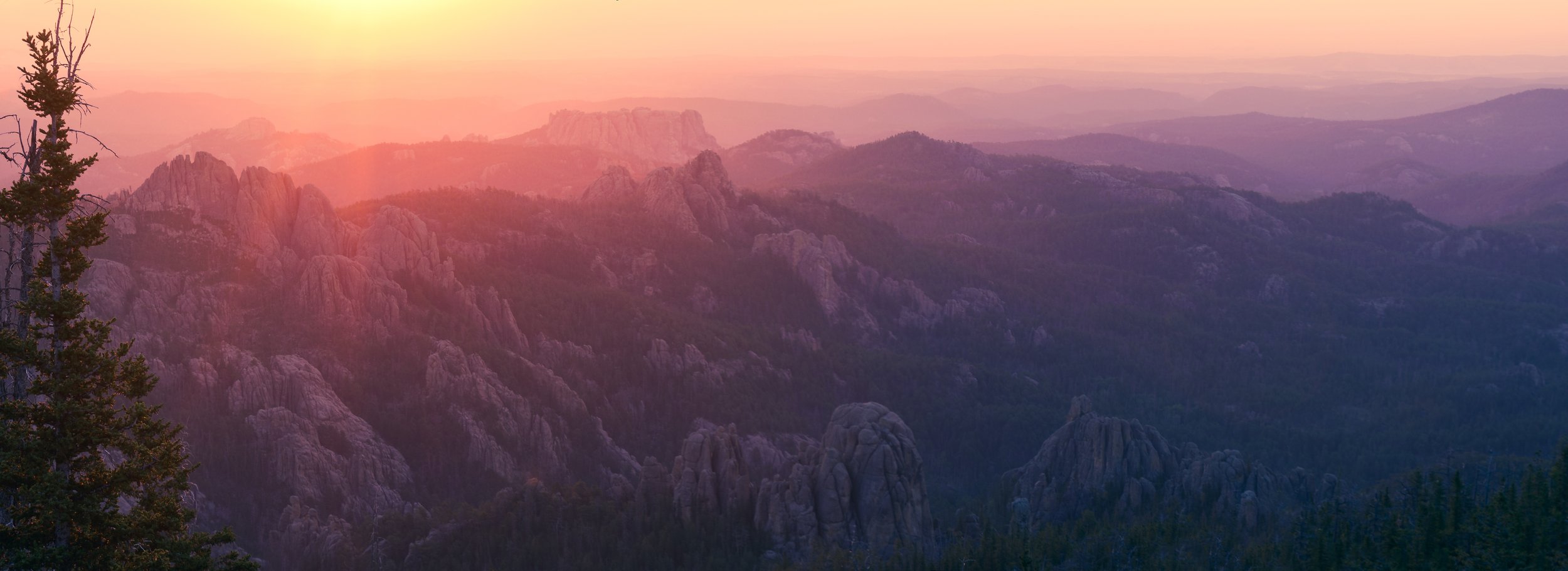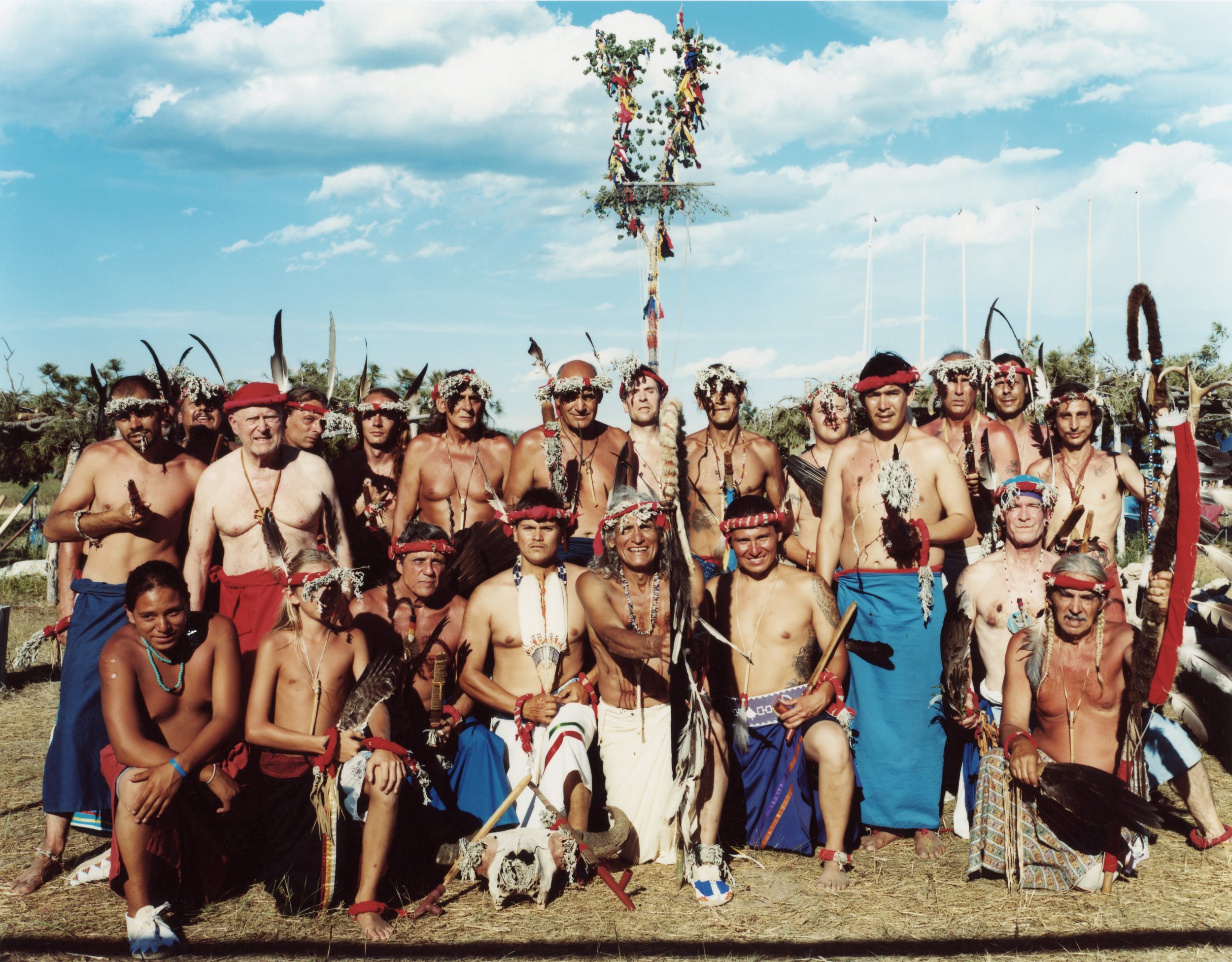
Sun Dance
_
Practicing and sharing our Sacred Ceremonies
The Sun Dance brings great healing to the individuals who take part. People dance to heal past traumas, to connect with their spirit or ancestors, and for personal reasons that only they know.
To continue this tradition of healing and transformation, our Tiospaye is committed to sustaining the ritual of the Sun Dance – and our other sacred ceremonies – and to growing our community of Sun Dancers.
We hope our work inspires indigenous people throughout the world to rekindle, practice, and share their ceremonies and traditions, and to value and celebrate their spiritual heritage.
Why We Sun Dance
The Lakota on Pine Ridge have experienced immeasurable trauma. Our people were forced to give up our ancestral land and leave a way of life that was spiritually and physically fulfilling. Many Lakota now live in extreme poverty, which affects our individual health and well-being and our future and legacy as a people.
We Sun Dance to heal from great loss, celebrate our culture and ancestry, and foster a sense of acceptance, belonging, and hope for our people
While many tribes do not allow outsiders to join their Sun Dance, our Tiospaye takes pride in the diverse group of individuals – from Lakota and other indigenous people from tribes across the world to mothers, daughters, war veterans, and scholars – who come together to dance and heal at our sacred ceremony.
What is the Sun Dance?
The Sun Dance is the most sacred of the seven sacred ceremonies practiced by the Oglala Sioux. Typically held around the summer solstice, the event spans four days. There are four dances each day, and a dance can last many minutes or several hours.
Our Sun Dance includes both men and women. The dancers dance around a sacred tree to the rhythm kept by the drummers while singers sing sacred Lakota songs. As they dance, the dancers give praise to the four directions. Then, each dancer calls a supporter (participants who observe and support the ceremony) to share a pipe filled with sage and tobacco. A firekeeper blows sage onto the Supporters. The Sun Dance is also graced by a male and female lead who serve as spiritual directors of the ceremony, as well as an intercessor, one who channels between the spiritual and human world.
Dancers fast throughout the Sun Dance. Towards the end of the ceremony, flesh sacrifices are sometimes made; dancers are pierced with bones tethered to the sacred tree and dance until the bones tear through their flesh. When our ancestors danced, it was a great honor to die during the Sun Dance. At our present-day gathering, medical personnel are on site to keep practices safe and to help dancers stay healthy and hydrated.
Our Sun Dance, Past and Present
_
Our ancestors Sun Danced in Paha Sapa for centuries. Though all Native ceremonies, including the Sun Dance, were outlawed by the US government from 1882–1934, many tribes still practiced the Sun Dance in secret – behind closed doors and draped windows.
In 1883, George Sword was Intercessor at the last Oglala Sun Dance held on Pine Ridge in the pre-reservation.
Our Tiospaye started the Afraid of Bear – American Horse Sun Dance in 1987. It took place at Devil’s Tower for 10 years, the Black Hills Wild Horse Sanctuary for 20, and is now held on Flandreau Santee land in the Black Hills. We are actively working to find a permanent site in the Black Hills for our annual Sun Dance.
Seven Sacred Ceremonies
In 1883, the US government criminalized all sacred ceremonies practiced by Native American people. While some tribes continued to Sun Dance and practice other ceremonies in secret, these sacred traditions were lost to many Lakota people for decades.
Part of our mission as a Tiospaye and as a nonprofit organization is to bring all Seven Sacred Ceremonies of Oceti Sakowin (the seven fireplaces) back into our ongoing spiritual practice. We believe these ceremonies are integral to understanding who we are as a people and can help us heal and thrive now and in the future.
-
Inipi - Rite of Purification
Inipi, which means “to live again,” is a purification ceremony conducted in a sweat lodge, before and/or after another ceremony, or as its own.
-
Nagi Gluhapi - Keeping of the Soul
When someone passes away, a lock of the departed’s hair is placed in a “soul bundle” for a year before it is released on its journey across the milky way.
-
Hanbleceyapi - Crying For a Vision
Hanbleceya is a rite of passage in which a vision-seeker fasts alone in nature for four days and nights, praying for a vision.
-
Hunkayapi - The Making of Relatives
Hunkapi is a ceremony of relationship; in it, an elder swears to protect a younger person, or non-tribal people are adopted into a Tiospaye.
-
Isnati Awicalowanpi - A Girl's Coming of Age
When a Lakota girl begins entering womanhood, her family holds a feast in her honor and the girl gives gifts to the guests, who have supported her life journey.
-
Tapa Wankalyeyapi - Tossing the Ball
A young girl, encircled by her community, throws a painted ball made of buffalo hide in the four directions to members of the community, then straight up in the air to Wakan Tanka.








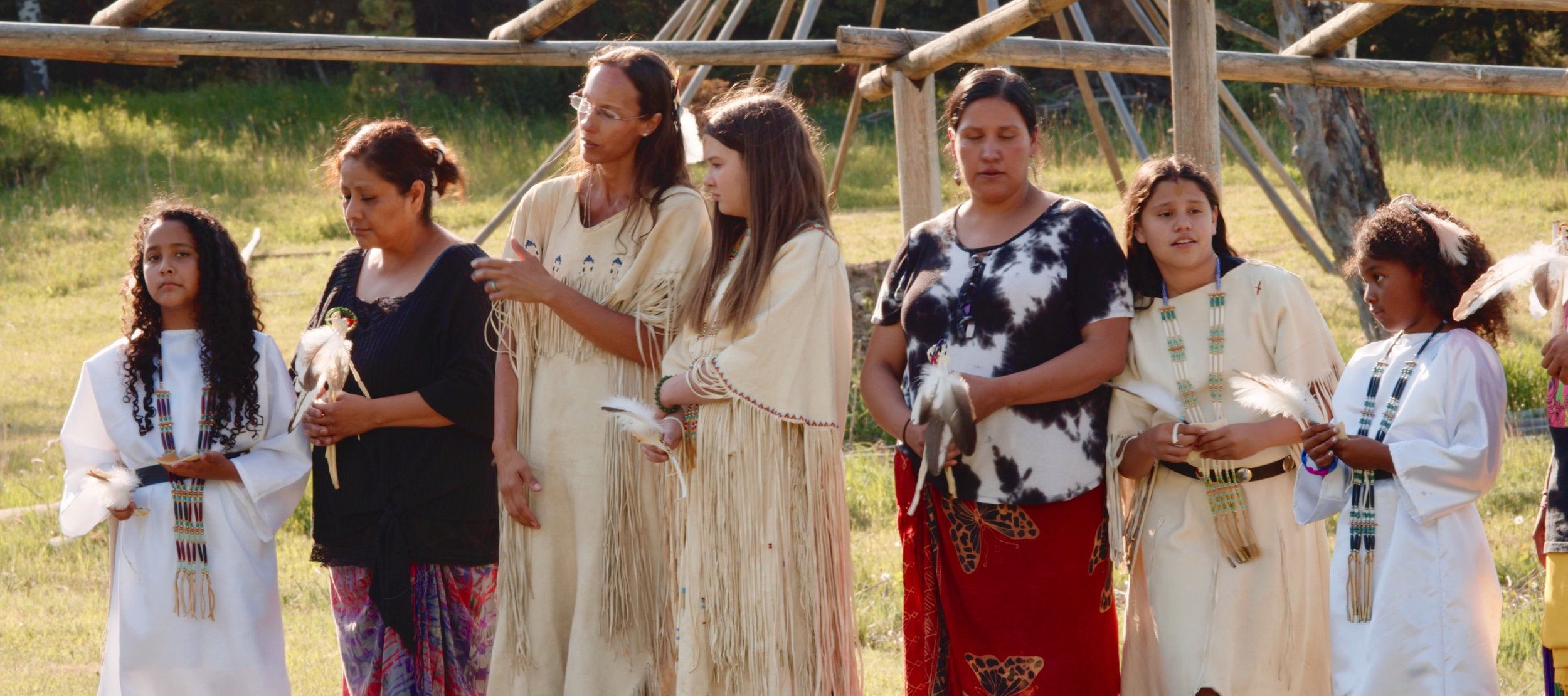




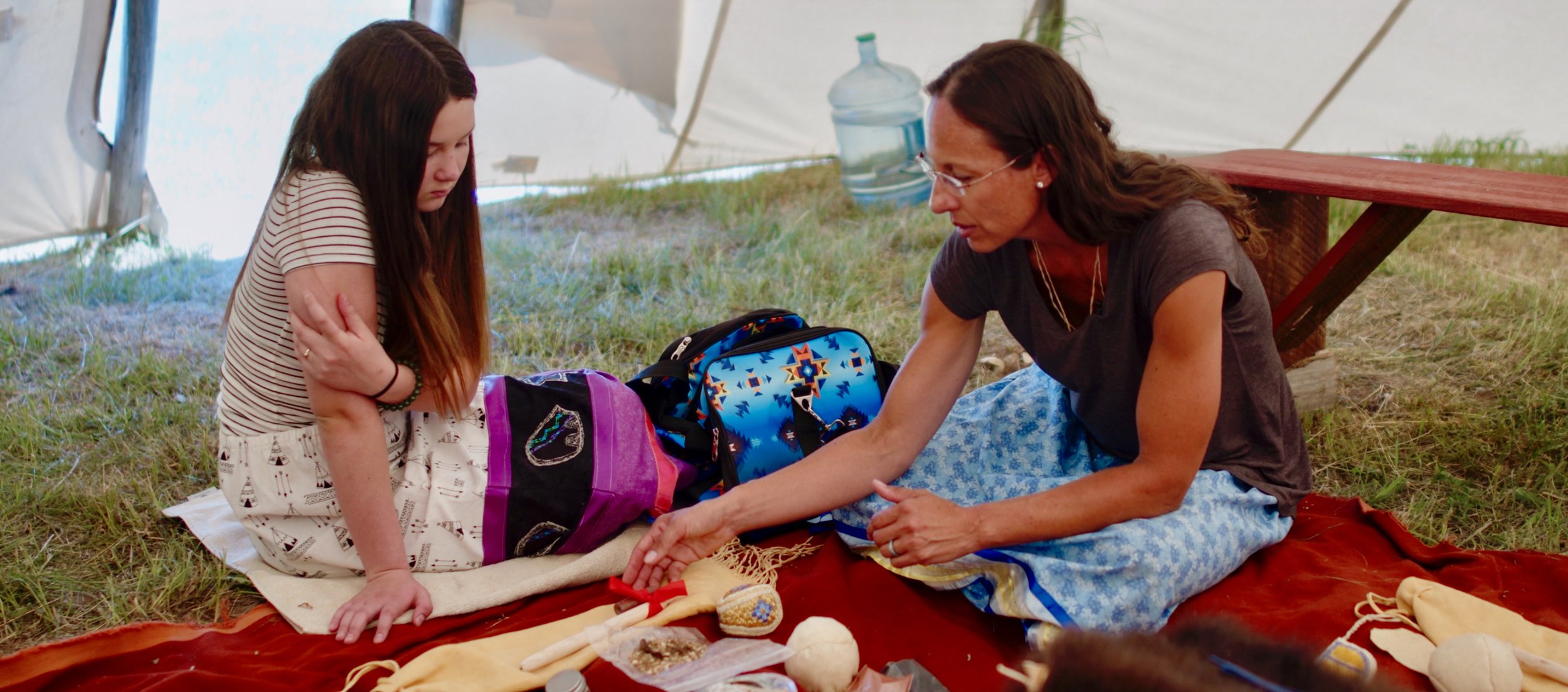
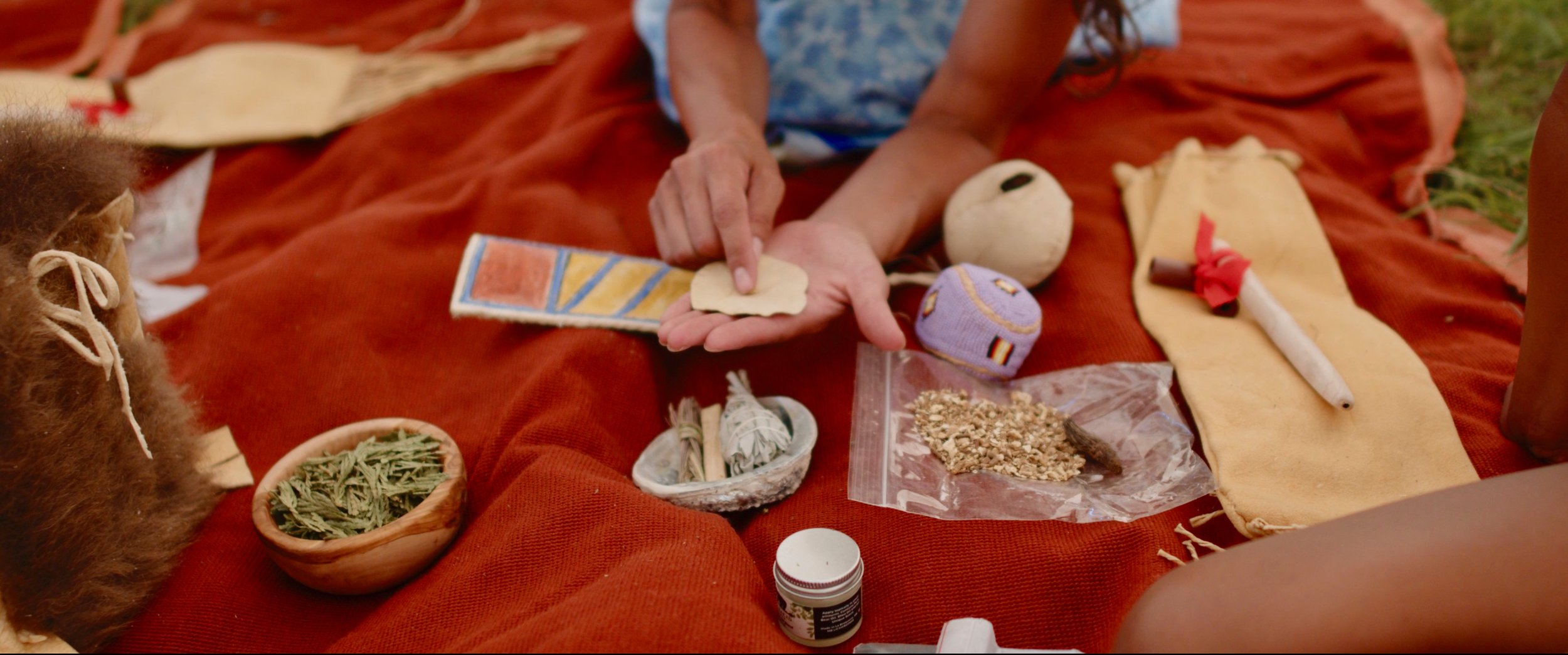


The Sacred Ceremonies Film Project
In 2021, the Afraid of Bear-American Horse Tiospaye launched a multi-year initiative to re-introduce all of the sacred ceremonies into ongoing practice and, in the footsteps of our ancestor, George Sword, to preserve these sacred ways by sharing them widely. Sword gave a verbal narrative to historian James Walker in the 1800’; today we are working with two filmmakers to create a series of films for use by educators and organizations, as well as for the general public.
The Film Project is about more than preserving tradition. It aims to speak directly to native youth in a medium that is accessible anywhere, anytime. We will be investing in our youth as we take them through rites of passage that speak to their connection to the land, nature and community as well as to their responsibilities in the world.
We inaugurated this project by holding the Isnati Awicalowanpi (a Girl’s Coming of Age) and the Tapa Wankalyeyapi (Tossing the Ball) with four girls. Over the months leading to their arrival in the Black Hills, they learned how to prepare ritual foods of buffalo meat, corn and chokecherries and how to use these foods in the course of the ceremony. Over two days, the girls learned Inipi, the rite of purification. They “wiped tears” from those who had lost loved ones, gave gifts to instill generosity, and fostered ties with elders who promised to support them through life’s journey.
Each year, in addition to the Sun Dance, the Tiospaye will hold ceremonies in the Black Hills that draw on these sacred traditions, capturing the essence in films of varying formats.
